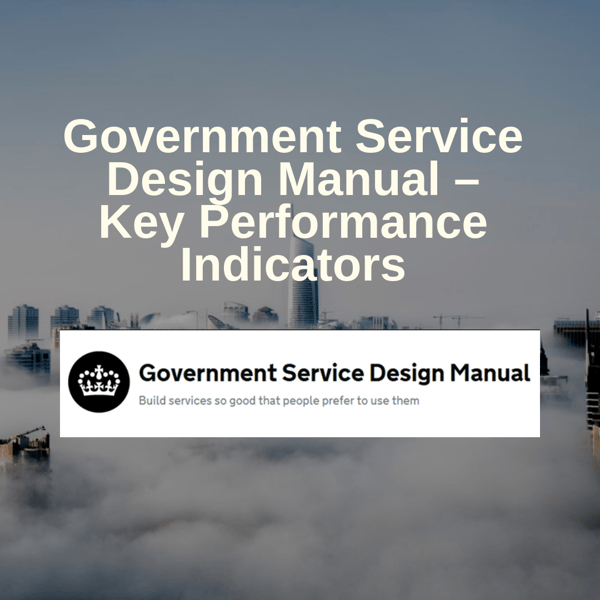
The following Paragraphs are taken from the Government Design Manual:
"In addition to the four core KPIs (cost per transaction, user satisfaction, completion rate and digital take-up) it is recommended that you consider other useful KPIs specific to your service that will help you measure and improve its performance.
Understand user / stakeholder needs
Different sets of users within each department will typically have their own requirements for each service. A Service Manager will need to see a range of metrics that help them make decisions about the service on a daily basis.
You will need to identify the various users within your organisation, and prioritise their requirements. Technical requirements might include improving response time or server resilience; financial requirements could include reducing costs or increasing revenue. There may be a customer service requirement to improve customer satisfaction, or wider strategic aims to reduce fraud and error.
These needs will typically be reflected in the organisation’s business objectives or in the business case for transforming a service.
An approach that worked well for the GOV.UK was to run a brainstorming session to generate a long list of metrics which we then narrowed down by asking senior managers, ‘if you had to choose one KPI, what would it be?’
Checklist
- Have you identified who your users and/or stakeholders are?
- Have you articulated your users and/or stakeholders needs?
- Have you prioritised services?
Decide what to measure
Develop simple, actionable and collectable metrics based on your understanding of user and stakeholder needs. Identify where that information will come from and how frequently it will be needed. Think especially about the functions your service is relying on and try to identify some KPIs to ensure you are constantly monitoring and improving these functions.
You might want to measure things like:
- the number of downloads
- a transaction’s drop off rate
- the payment success rate
It’s good practice to record every event generated by the system even if it’s not currently of interest. Measure everything (where it is cost-effective and practical to do so). This maximises the flexibility to come back later and revise the chosen metrics and tailor data visualisations to different audiences.
Checklist
- Are your metrics simple, actionable and collectable?
- Have you mapped your metrics to the relevant audience?
- Have you identified where your metrics will be sourced from?
- Do you know how frequently performance information is required by your users?
Further reading
The NAO report Digital Britain One: Shared infrastructure and services for government online identified that there was a lack of information on the costs and associated benefits of digital services.
Use Anaeko's Service Clarity for your KPI Reporting. Go to ServiceClarity.com
Topics: News



